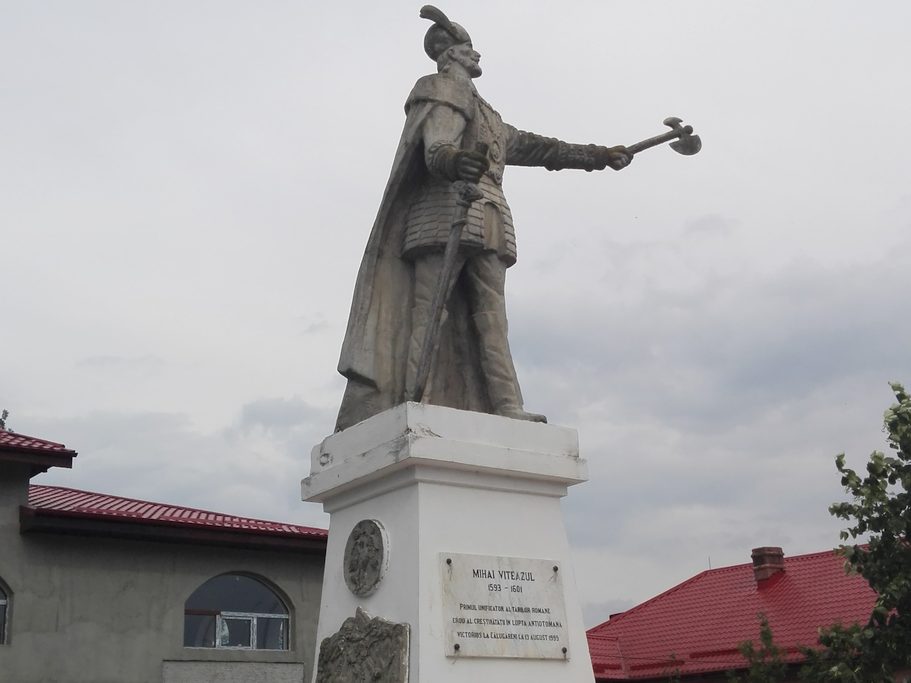

The equestrian Statue of Mihai Viteazul in Giurgiu was carried out at the initiative of the Mayor of Giurgiu, Lucian Iliescu, a plastic artist from Constanta, who also carried out the equestrian Statue of Mihai Viteazu in Navodari, inaugurated on 15 August 2011, as replica of the statue of Mihai Viteazul from Bucharest.
The mayor’s intention was to locate it inside the roundabout nearby the Emergency Hospital from Giurgiu county.
The statue, casted in bronze in Turkey, like the other one from Navodari, was brought to Giurgiu on 30th of May 2012 and it was provisionally discharged near the city park.
Following the local elections of 10 June 2012 in Giurgiu, another mayor was elected.
The new mayor of Giurgiu, Nicolae Barbu has launched a public consultation and has asked for the architects and specialists opinion from the County Museum, following which it was decided that the equestrian statue of the Prince Mihai Viteazu to be placed in the central area of the park, that bears his name, and not in the middle of the street, where passengers access is impossible.
At the beginning of works it was discovered that an important drinking water pipe passes under the place determined, so that the architects a little changed the space form, from circular to oval, the statue being visible due to high plinth, in steps, designed thus to come into contact with people and not just as an inserted object. Its steps will be used as a resting place for young people, reading, conversation, the architect Anne Marie Gacichevici appreciated, an adviser within the Municipality.
On August 30th, 2012, the statue was raised on the pedestal located in the Mihai Viteazul park.
Mihai Viteazul (born on 1558, Targul de Floci – death on 9 of august 1601, in Turda) was the ruler of Wallachia between 1593-1601. For a period (in 1600), he was a de facto leader of the three largest medieval countries, which forms today’s Romania: Wallachia, Transylvania and Moldova. Before reaching the throne, as a nobleman, he held high dignities such as “Ban” of Strehaia, “Stolnic” of the lord and “Ban” of Craiova.
The Mihai Viteazul figure reached the Romanian national pantheon after being recovered from the Romanian historiography of the nineteenth century, an important role being played by the Nicolae Bălcescu‘s “opus” – Românii supt Mihai-Voievod Viteazul. Thus the voivode became an important precursor of unification of Romanians, which was to be accomplished in the twentieth century.



